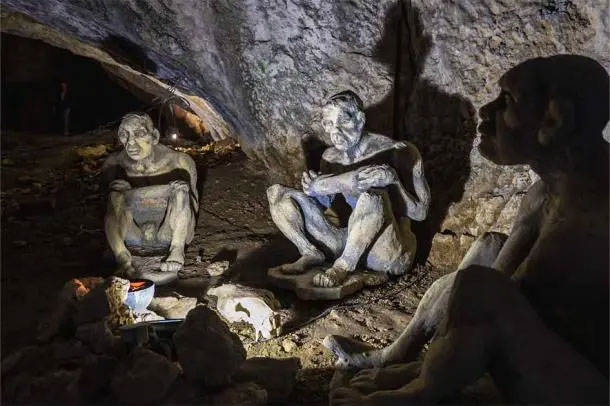Homo sapiens interbred with other species 47,000 years ago
A new genetic analysis has revealed how the DNA of an extinct species crept into our Homo sapiens bloodstream .
New work led by population geneticist Priya Moorjani from the University of California at Berkeley (USA) shows that Neanderthals DNA in modern Homo sapiens bloodlines comes from a long and unique period of mixing. about 47,000 years ago.

Exhibition at Bacho Kiro cave near Dryanovo - Bulgaria, which contains the remains of a number of Homo sapiens hybrids with Neanderthals 35,000-45,000 years old - (Photo: SCIENCE/ANCIENT ORIGINS)
Homo sapiens - homo sapiens, modern humans - is us , and Neanderthals are another species in the same genus Homo (genus Human), which separated from the ancestral species at least 500,000 years ago.
As some previous studies have shown, during the process of migrating from Africa and then spreading to Europe and Asia, our Homo sapiens ancestors met a number of other human species.
Among them, interbreeding has arisen with at least two species: Neanderthals and Denisovans.
But exactly how that happens remains a mystery. All the evidence for such interbreeding so far has been largely indirect - for example, about 2% of Neanderthals DNA exists clearly in the modern human genome.
According to the research summary of the scientific magazine Science, 59 ancient Homo sapiens genomes were sequenced in detail, helping American scientists rediscover that mysterious time of coexistence.
The oldest DNA includes from the Ust'-Ishim man of Western Siberia (45,000 years old), the Czech Zlatý kůň woman (45,000 years old), individuals from Bulgaria's Bacho Kiro cave (35,000-45,000 years old ) and Romania's Peștera cu Oase cave (40,000 years old).
Next, they identified regions of Neanderthal DNA in the genomes of these ancient Homo sapiens and in the genomes of 275 modern Homo sapiens from around the world.
A computer software has modeled the evolution of Neanderthals' genes over time, estimating how many generations it would take for this hybrid genome to develop as sophisticated as it is today.
The figure of 47,000 years has been put forward since that time , in addition to evidence that interbreeding between the two species has occurred continuously for about 6,000-7,000 years.
This research not only provides important insights into human evolution and migration , but also confirms that modern humans have acquired some human genes. Neanderthals.
These genes are related to skin pigmentation, immune response, metabolism, some diseases. Learning about them is very meaningful to medicine, and can lead to new disease treatment methods. .
- Find out where Homo sapiens mixed blood from different species
- Discovered more human species have existed alongside us for 200,000 years
- 'Canyon of other human beings' hides incredible civilization
- Find the 'garden of paradise' where 2 human species met, creating us today
- How did the brothers of mankind disappear before the dawn of civilization?
- The oldest modern human skull outside Africa
- There are only 1,300 people left in the world: The 'apocalyptic' escape is real!
- 40,000 years ago, other species arranged their homes like modern humans
- People said 1.8 million years ago?
- The history of the universe compressed for a year
- Identify a whole new human species that gave birth to us
- Incredible discovery of the human world 'superman' extinct
 Discovered an ancient centipede fossil 99 million years old
Discovered an ancient centipede fossil 99 million years old Discovered bat-like dinosaurs in China
Discovered bat-like dinosaurs in China Discovered a 200-year-old bronze cannon of the coast
Discovered a 200-year-old bronze cannon of the coast Discover 305 million-year-old spider fossils
Discover 305 million-year-old spider fossils